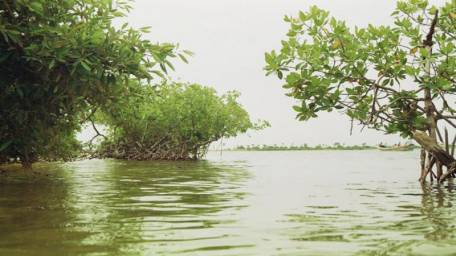The minister has concluded that developing economies in the Asia-Pacific region continue to farewell in comparison to the rest of the world, he warned in a statement released here on Sunday.
“But increased frequency in climate change-induced hydrological and geological disasters are most likely to scuttle Asia-Pacific economic growth trajectory as long as disaster preparedness is not strengthened in the region and public infrastructure, agriculture, water, health sectors and human settlements are not made climate-resilient.
He said the report released last week by the United Nations’ Economic and Social Commission for Asia and the Pacific (UNESCAP) said that the growth potential of Asia-Pacific developing countries, together which are home to the 743 million poor people, is being held back by infrastructure shortages, while existing infrastructures are prone to the escalating number of natural disasters.
According to Asian Development Bank report “The Economics of Climate Change in the Pacific 2013”, the storms and floods, in particular, are becoming endemic to the region, and their increasing frequency and severity can reduce economic growth and development, he said.
Recent earthquake in Nepal, ongoing erratic devastating winter rains/hailstorm in Pakistan’s north and India, Typhoon Noul in Philippines provide a fresh reminder of how natural disasters can reverse economic and social gains, with massive loss of life and livelihoods, Mushahidullah Khan recounted.
The region has borne the brunt of the physical and economic damage of increased disasters. It accounted for 38 percent of global disaster-related economic losses between 1980 and 2009. People in Asia and the Pacific are four times more likely to be affected by disasters than those in Africa, and 25 times more likely than in Europe or North America.
Incidents of precarious weather extremes are occurring in the Asia-Pacific region more often than any other region of the world. This gives the region, which accounts for nearly half of heat-trapping global greenhouse gas emissions, a huge stake in mitigating global temperature rise while adapting to already rising climate change impacts in shape of floods, typhoons, cyclones, sea level-rise and heat-waves.
Quoting different reports, the minister said that some 60 percent of the region’s people rely on highly climate-sensitive farms, forests and fisheries for their livelihoods. Seven out of the 10 countries most vulnerable to climate change and disasters caused by natural hazards are in the Asia-Pacific. A decrease in fresh water availability could affect more than one billion Asian people by 2050.
The Asia-Pacific countries urgently need to boost investment in disaster management, climate-resilient infrastructures, he said referring to different global studies, Mushahidullah insisted.
The minister highlighted, “Investing in disaster risk reduction (DRR) as part of climate change adaptation does make sense. Because, every dollar spent for DRR saves at least $4 in post relief and rehabilitation costs.”
Besides it, much more can be done to boost these efforts. The region seriously needs, for example, an Asia-Pacific disaster risk insurance scheme, which will benefit from the wider introduction of catastrophe bonds, he underlined.
Such innovative forms of insurance, the minister argued, can bolster resilience by forcing communities to model, price and manage the risks of climate change.
A climate-induced disaster fund for the region that would channel critically needed post-disaster assistance into building resilience against future catastrophic events should also be considered.
Mushahidullah pointed out that so far few regional countries have focused on disaster risks in their economic development plans and Pakistan was among them.
Therefore, the regional countries must invest in disaster prevention - in infrastructure and the region’s social development.
Neglecting the looming threats of increased weather-related disasters would put millions of Asia’s most vulnerable people at increased risk of poverty, ill health and premature death, he cautioned.
The minister urged the global community to mobilize massive funds for climate change adaptation (at least around $40 billion a year) for the Asia-Pacific to help it cope with the vagaries of climate change, which post a grave risk to the gains of economic growth made so far.
Source: Daily Times | 18 May 2015














